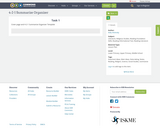
- Subject:
- Literature
- Reading Foundation Skills
- Reading Informational Text
- Reading Literature
- Religious Studies
- Material Type:
- Lesson Plan
- Author:
- Kelly Shivinsky
- Date Added:
- 05/22/2019


Teaching and learning resources for A&P 2. Please check back as I intend to add more.
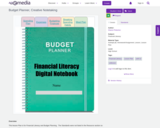
This lesson Plan is for Financial Literacy and Budget Planning. The Standards were not listed in the Resource section so they are as follows:
Analyze the role of cultural, social, and emotional influences on financial behavior.
Evaluate the role of emotions, attitudes and behavior in making financial decisions.
Recognize that individuals are responsible for their own financial decisions and for subsequent positive and negative consequences.
Define a rational decision-making process and the steps of financial planning.
Define opportunity cost (tradeoffs) and their role in decision making.
Describe a rational decision - making process.
Identify short- and long-term financial decisions and the impact they have on financial planning.
Define the elements of a financial plan.
Standard 1Identify and explain the process of budgeting based on calculated income.
Develop a budget.
Identify and prioritize fixed, fixed variable and variable budget categories.
The Image for this Budget Planner was created by Sharon Pinkerton.
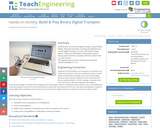
Students wire up their own digital trumpets using a MaKey MaKey. They learn the basics of wiring a breadboard and use the digital trumpets to count in the binary number system. Teams are challenged to play songs using the binary system and their trumpets, and then present them in a class concert.

Every Good Boy Does Fine, by John Riggio, is another in the continuing series of songs that teach musical concepts. In this fun music video, animated by Bill Belongia, Piggy the pig helps teach the names of the lines of the treble clef through the use of mnemonics.

This clever song, by Teresa Jennings, helps young music students learn and remember the spaces on the treble clef. This fun video, animated by Bill Belongia, is a great music teaching tool.

Children will love this light and bouncy tune, animated by Bill Belongia, as they learn about the quarter rest. The first time through the song you will see critters in various states of "resting". The second time through the song you see the tap dancing cow give his all. Side note, the cow dance was taken from a routine supplied by our own in house dance expert Liz Wagner.

Includes tool overview and teacher samples.

This resource is a series of guided lecture notes which cover topics from Statistics Using Technology 3rd edition, Kozak.These notes may be used in a lecture to follow along with Statistics Using Technology 3rd edition, Kozak.If you would like a copy of the notes completed, please reach out to Mike Rozinski at mrozinski@mohave.edu
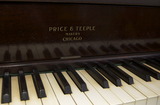
This online module is designed to appeal to learners of all ages that want an introduction to the skills necessary to play piano. This course will cover basic finger patterns, scales, and how to start reading music through the amalgamation of multiple online resources intended to appeal to the different learning styles of all students. By the end of this module, the learner should be able to perform the C scale, name the individual notes, and be able to demonstrate simple finger techniques. Please note that having a physical piano while completing this lesson will facilitate a much higher comprehension of the material.
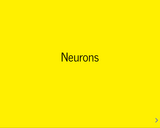
A character-driven walkthrough of the basics of neuron anatomy and physiology
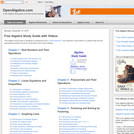
This free study guide is designed to supplement your current textbook. This Algebra Study Guide is a solutions oriented approach to Algebra. When solving problems students are asked to communicate their thought process by showing steps wherever possible.

Children's music writer Teresa Jennings (from Plank Road Publishing / MusicK8.com) has created a catchy musical concept song that focuses on the oh-so-important quarter note. Bill Belongia's animation features an imaginative mouse who finds many unusual uses for the versatile note. Kids will love the video, and they're certain to retain what they learn when they view it.
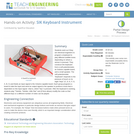
Students work as if they are electrical engineers to program a keyboard to play different audible tones depending on where a sensor is pressed. They construct the keyboard from a soft potentiometer, an Arduino capable board, and a small speaker. The soft potentiometer “keyboard” responds to the pressure of touch on its eight “keys” (C, D, E, F, G, A, B, C) and feeds an input signal to the Arduino-capable board. Each group programs a board to take the input and send an output signal to the speaker to produce a tone that is dependent on the input signal—that is, which “key” is pressed. After the keyboard is working, students play "Twinkle, Twinkle, Little Star" and (if time allows) modify the code so that different keys or a different number of notes can be played.
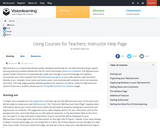
This module introduces instructors to the features and benefits of the Visionlearning MyClassroom system.
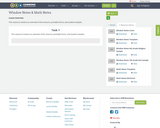
This resource contains an overview of the resource, printable forms, and student samples.
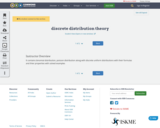
It contains binomial distribution, poisson distribution along with discrete uniform distributions with their formulas and thier properties with solved examples